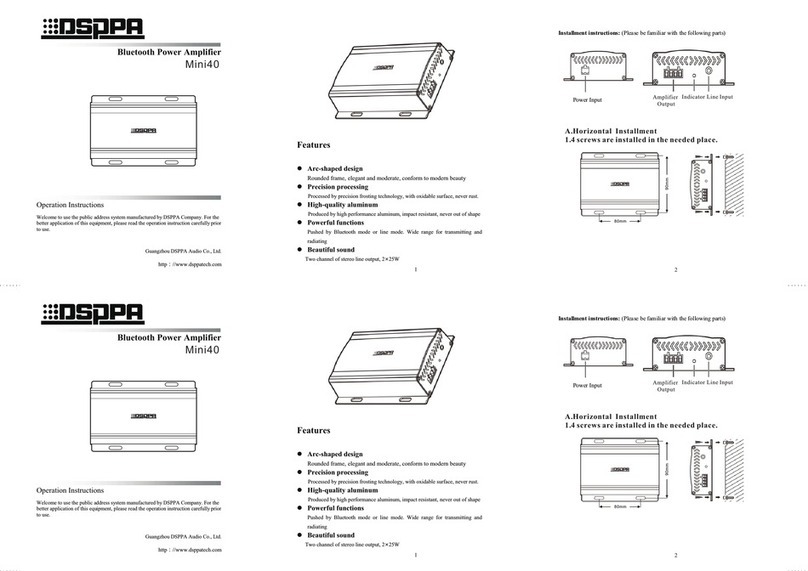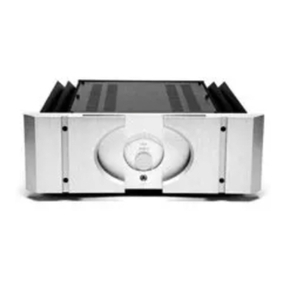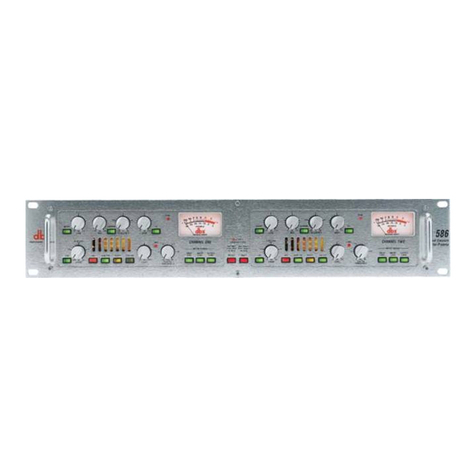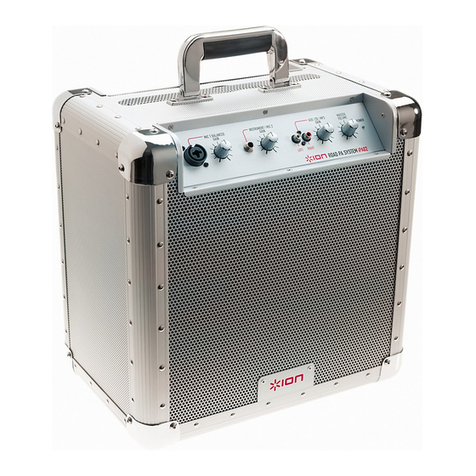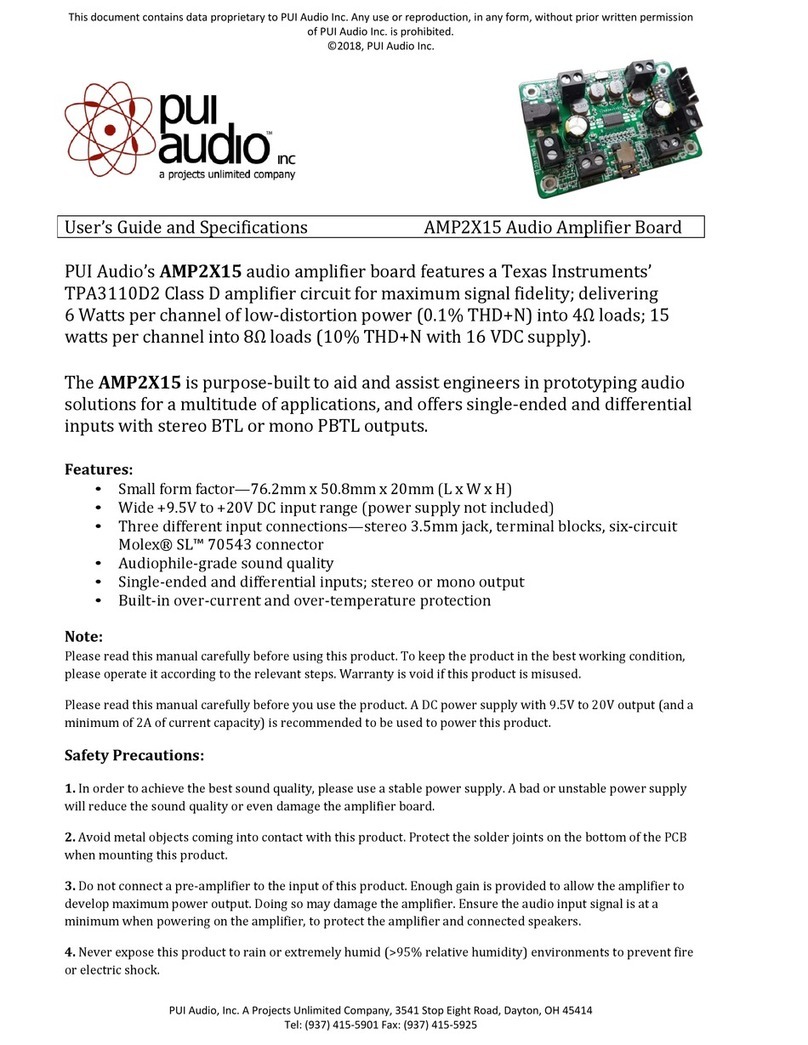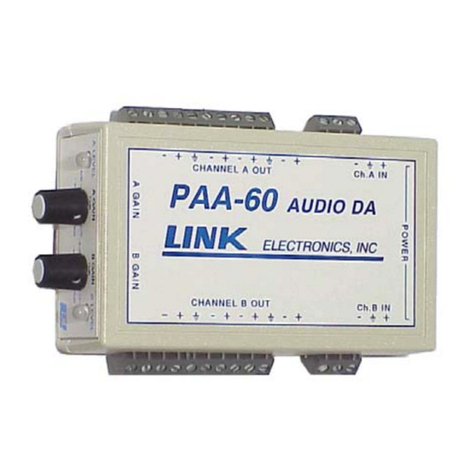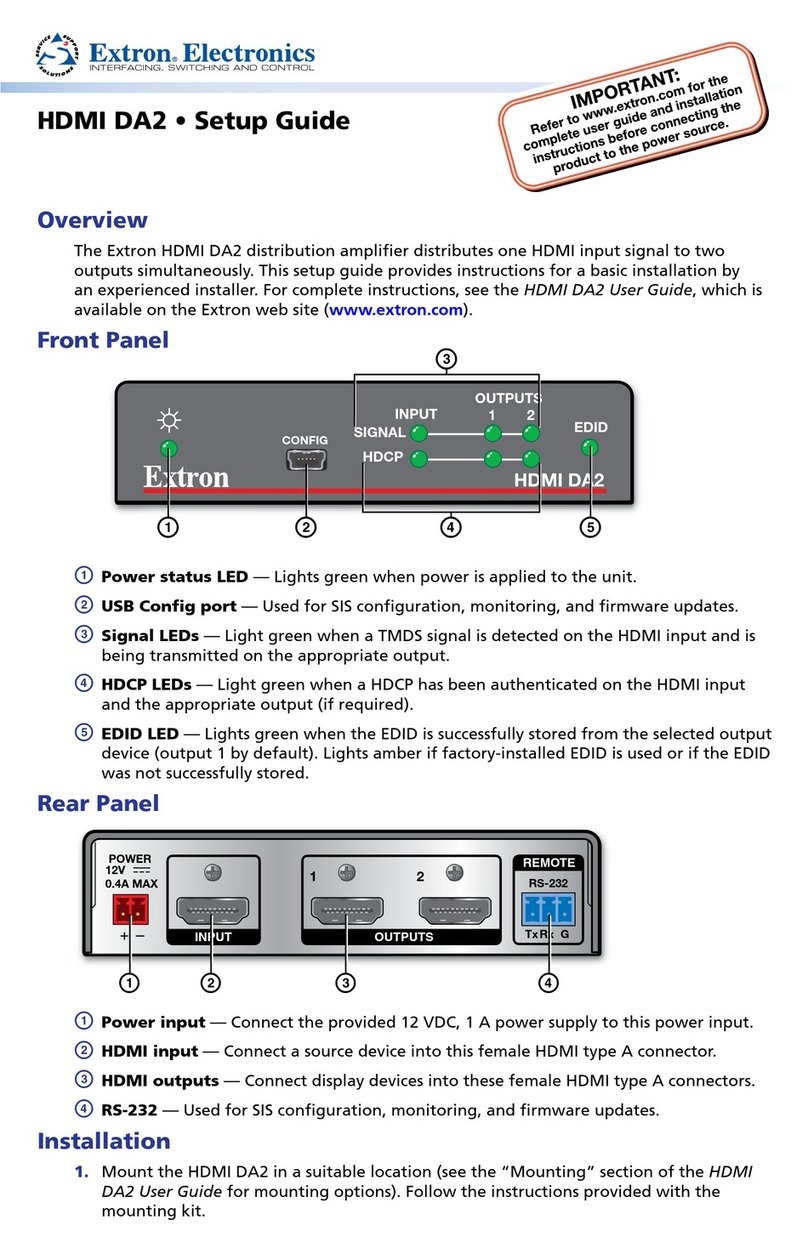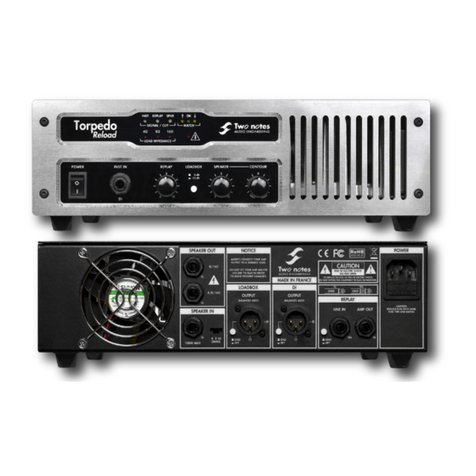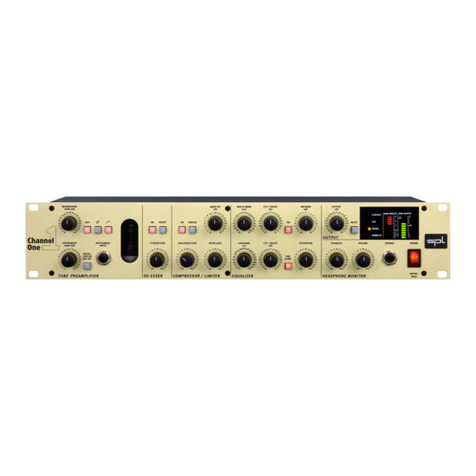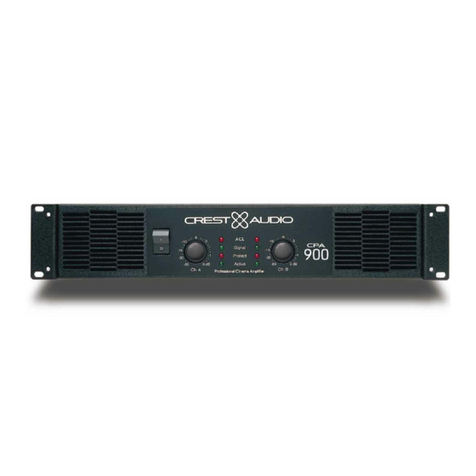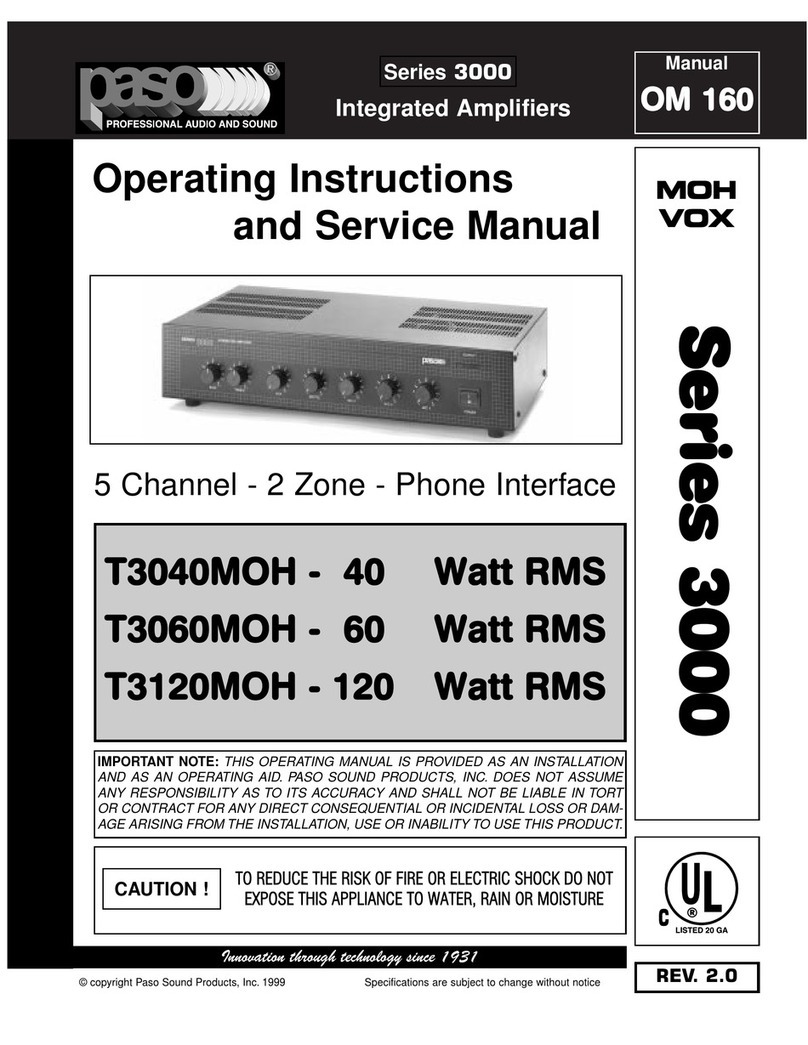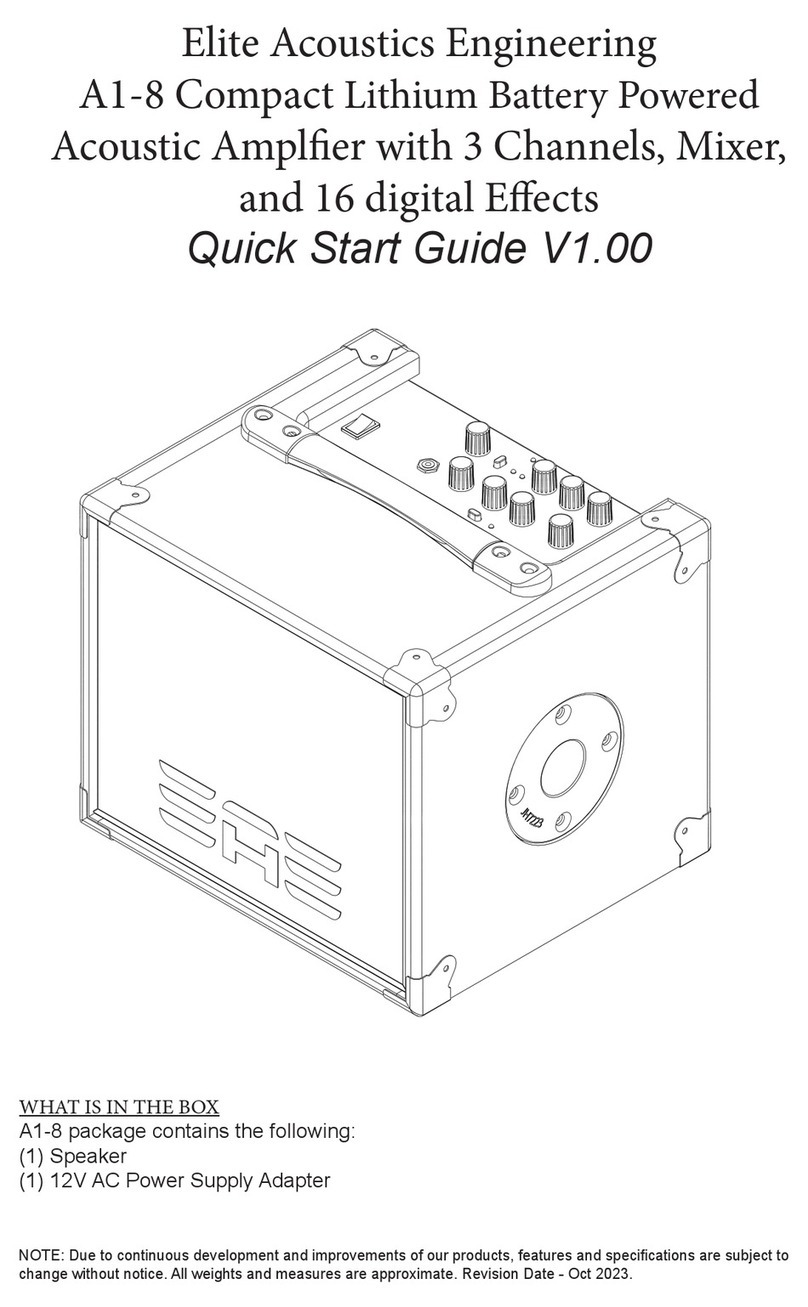Duplomatic EDM-M*/30 Series Installation and operation manual

89251/218 ETM
EDM-M*/30
Digital Card
Start - up
manual
Duplomatic MS Spa

page 2 of 29 Duplomatic MS S.p.A. ▪ EDM-M*/30 Start-up Manual ▪ 89251/218 ETM ▪ Jun 2018
Table of contents
GENERAL INFO.............................................................................................................................................3
Contacts.............................................................................................................................................. 3
Features...................................................................................................................................................4
Available versions....................................................................................................................................5
Diagnostic................................................................................................................................................6
Power output ..........................................................................................................................................6
Analog input ............................................................................................................................................6
Led description........................................................................................................................................7
Technical Characteristics.........................................................................................................................8
Overall and mounting dimensions ..................................................................................................... 9
Installation instructions.............................................................................................................................10
PIN Tables..............................................................................................................................................11
EDM-M1 ........................................................................................................................................... 11
EDM-M2 ........................................................................................................................................... 12
EDM-M3 ........................................................................................................................................... 13
Wiring ....................................................................................................................................................14
Card Setup .............................................................................................................................................15
EDMPC/30 kit ................................................................................................................................... 15
EBC App ............................................................................................................................................ 15
EBC configurator software ............................................................................................................... 16
Parameters ................................................................................................................................................17
Summary ...............................................................................................................................................17
Configuration.........................................................................................................................................19
DIAGNOSTICS (failure monitoring)................................................................................................... 19
ENABLE (to activate external enable of power stage) ..................................................................... 20
Analog input ..........................................................................................................................................20
SIGNAL_OFFSET................................................................................................................................ 20
SIGNAL_GAIN.................................................................................................................................... 20
RAMPS .............................................................................................................................................. 21
Output signals .......................................................................................................................................22
CURRENT .......................................................................................................................................... 22
RESIST ............................................................................................................................................... 22
CURVE ADJUSTMENT........................................................................................................................ 23
PWM................................................................................................................................................. 24
DITHER_AMP, DITHER_FREQ............................................................................................................ 24
PROCESS DATA (monitoring) ............................................................................................................ 25
APPENDIX 1: EDM-M/20 migration..........................................................................................................26
Electrical compatibility ..........................................................................................................................26
Parameters ............................................................................................................................................26
APPENDIX 2: Block diagrams ....................................................................................................................28
EDM-M1 ........................................................................................................................................... 28
EDM-M2 ........................................................................................................................................... 28
EDM-M3 ........................................................................................................................................... 29
Function of pin 12............................................................................................................................. 29

Duplomatic MS S.p.A. ▪ EDM-M*/30 Start-up Manual ▪ 89251/218 ETM ▪ Jun 2018 page 3 of 29
GENERAL INFO
This manual displays information about the digital card EDM-M* series 30, universal amplifier
for proportional valves.
Identification codes:
EDM-M1**/30E*-A
EDM-M1**/30E*-B
EDM-M2**/30E*-A
EDM-M2**/30E*-B
EDM-M3****/30E*-A
EDM-M3****/30E*-B
by Duplomatic MS S.p.A.
Should you have any questions concerning just the card, please contact Duplomatic MS S.p.A.,
indicating the description, the code and the serial number written in the label on case side.
Other useful literature about EDM-M/30 and its start-up can be found in:
Technical catalogue 89251/218 ED
Software pack EBC Software v.3.1.0.0 and later
For installation, start-up, commissioning and maintenance use only skilled workers and
materials fit for purpose, as recommended.
Before installation read this file and follow strictly what is indicated.
Duplomatic MS disclaims any liability for damage to person or property resulting from
noncompliance of rules and instructions here declared, from misuse or incorrect use or from
tampering of provided cards.
Contacts
Duplomatic MS S.p.A.
via Mario Re Depaolini 24
I-20015 Parabiago (MI)
ITALY
tel. number: +39 0331.895.111 • fax number: +39 0331.895.249
e-mail: support@duplomatic.com http://www.duplomatic.com

page 4 of 29 Duplomatic MS S.p.A. ▪ EDM-M*/30 Start-up Manual ▪ 89251/218 ETM ▪ Jun 2018
Features
The EDM-M is a digital card suitable for the control of one proportional valve with two
solenoids (M2 version) or one/two independent proportional valves, also pressure or throttle,
with one solenoid each (M1 and M3 versions).
It is designed for rail mounting type DIN EN 50022.
The card supplies the current to the solenoid according to the reference signal and
independently of temperature variations or load impedance.
The card uses micro USB interface, and via software EBC configurator it is possible to set
parameters.
-100% compatible with previous version 20
-Micro USB connector:
no serial converter required
optionally board supplied by USB for programming (valve use disabled)
-Separate PWM settings (PWM-Dither) in the 2-channels version EDM-M3
-Enable signal (version A only)
-Parameters programmable via software:
Ramps, deadband compensation, scaling of analogue inputs
-Fault recognition (cable breaks, short-circuits, etc.)

Duplomatic MS S.p.A. ▪ EDM-M*/30 Start-up Manual ▪ 89251/218 ETM ▪ Jun 2018 page 5 of 29
Available versions
EDM-M z xx hh /30 Ey- k
The functionalities of the module can be chosen by the proper ordering code, where:
-Zis the type of valve / valves to be driven.
1 - single valve with one solenoid
2 - single valve with two solenoids
3 - two valves with one solenoid each, (separate channels, EDM-M3 can manage even
two different type of valves)
-X indicates the nominal current required.
Two digits - XX - appear in M3 version only, because of the separate channels which
require entries for each coil.
Please note that option 5 is not settable for the 2nd channel, so if you have a coil with
this requirement link it with the 1st channel.
1 –860 mA
2 –1200 mA
3 –1600 mA
4 –1880 mA
5 –2600 mA
-Hindicates the choices for PWM frequency
Two digits - HH - appear in M3 version only, because of the different PWM value that
each solenoid requires.
1 –100 Hz
2 –200 Hz
3 –300 Hz
4 –400 Hz
-Yindicates the type of reference signal
0 = reference signal in voltage 0…10V or ±10 V depending on Zchoice,
1 = reference signal in current 4…20 mA
-Kindicates PIN12 setting as digital INPUT or digital OUTPUT
A = Pin 12 used for external enable (Non-existing configuration in previous series 20)
B = Pin 12 used for V aux (internal enable) - Series 20 compatible.

page 6 of 29 Duplomatic MS S.p.A. ▪ EDM-M*/30 Start-up Manual ▪ 89251/218 ETM ▪ Jun 2018
Diagnostic
Source
Fault
Characteristic
Command signal PIN 7 / 8,
Command signal PIN 10 / 11
4 ÷ 20 mA
Out of range or broken
wire
The power stage is deactivated
Solenoid A PIN 3 / 4
Solenoid B PIN 5 / 6
Out of range or broken
wire
The power stage is deactivated
Supply voltage
Out of range
The power stage is deactivated
EEPROM
(at switching on)
Data error
The output is deactivated
Power output
Proper parameters of maximum current, PWM, dither and set the output supplied to
solenoids.
Separate parameters are available for each output channel in EDM-M3 card version (two
valves with single solenoid)
Moreover, the output value can be compensated using the deadband compensation
parameter set.
The maximum current that can be provided to a coil is 120% of the CURRENT parameter.
The upper limit of CURRENT is set by CURRENT_LIM parameter and it can’t go over the
maximum current of 3600 mA for the output a 2600 mA.
Analog input
Analog inputs type can be selected by SIGNAL_TYPE parameter and signals can be scaled by
SIGNAL_OFFSET and SIGNAL_GAIN parameters.
M1 version (for one valve with one coil) require unipolar voltage (0…10 V) or current signal
(4…20 mA)
M2 version (for one valve with two coils) generates a proportional current on solenoid A with
a positive value of voltage or a current between 12…20 mA and a proportional current on
solenoid B with a negative value of voltage or a current between 4…12 mA.
M3 version (for two valves with one coil each), requires that both the analogue inputs must be
used.

Duplomatic MS S.p.A. ▪ EDM-M*/30 Start-up Manual ▪ 89251/218 ETM ▪ Jun 2018 page 7 of 29
Led description
The card is equipped with LEDs in the front panel, for a fast check of the card operation.
PWR ON (green led): Power On
OFF: No power supply
ON: Module supplied
L1, L2, L3, L4 (yellow led): Function according with EDM-M model
ON: Associated function consistent
Blinking: Failure as described in the table below
L5, L6 : not used
LED
Card model
Function
Slow Flashing
Fast Flashing
L1
M1
Reference
Signal missing
-
M2
M3
Reference 1
L2
M1
Solenoid
Coil Open
Short circuit
M2
Solenoid 1
M3
L3
M2
Solenoid 2
Coil Open
Short circuit
M3
Reference 2
Signal missing
-
L4
M1
Ready
Fault
-
M2
M3
Solenoid 2
Coil Open
Short circuit
ALL
All
Power supply
-
Missing power voltage
(just USB connected)
NOTE: LEDS blinking all together even when the USB communication is active but the card is not
powered.

page 8 of 29 Duplomatic MS S.p.A. ▪ EDM-M*/30 Start-up Manual ▪ 89251/218 ETM ▪ Jun 2018
Technical Characteristics
Power supply (Ub)
V DC
9 ÷ 36 ripple included
Fuse, external
A
6A medium time lag
Power consumption
W
Max 60
Output current
A
Max 4.5
Power supply protections
overload, polarity inversion
Output electrical protections
Short-circuit
Digital input
Input resistance
V
V
kohm
Logic 0: <5
Logic 1: >8
17
Digital output
Max output current
V
V
mA
Logic 0: <2
Logic 1: max Ub
50
Analogue input
mA
V
V
4 ÷ 20 (Ri = 56 ohm)
± 10 differential signal (Ri = 11 kohm)
0 ÷ 10 (Ri = 11 kohm)
PWM Output current
mA
200 ÷ 4000 (step less)
PWM frequency
Hz
100-500
Version B only: V aux
Max output current
V
mA
Ub
100
Double aux reference voltages
(pin 13/14)
Max output current
V
V
mA
+10
-10
50
Control time
ms
2-10 according with PWM used
Interface
Micro USB-B
Electromagnetic compatibility (EMC)
according to 2014/30/EU
Housing material
ABS
Connections
Plug-in terminal block with tightening
screws: 15 poles
micro USB-B
Operating temperature range
°C
-20 / +70
Protection degree
IP 20

Duplomatic MS S.p.A. ▪ EDM-M*/30 Start-up Manual ▪ 89251/218 ETM ▪ Jun 2018 page 9 of 29
Overall and mounting dimensions

page 10 of 29 Duplomatic MS S.p.A. ▪ EDM-M*/30 Start-up Manual ▪ 89251/218 ETM ▪ Jun 2018
Installation instructions
This module is designed for installation in a shielded EMC housing (control cabinet).
All cables which lead outside must be screened; complete screening is required. It is also
necessary to avoid strong electro-magnetic interference sources being installed nearby when
using our open and closed loop control modules.
Typical installation location: 24 V control signal area (close to PLC)
The devices must be arranged in the control cabinet so that the power section and the signal
section are separate from each other.
Experience shows that the installation place close to the PLC (24 V area) is most suitable. All
digital and analogue inputs and outputs are fitted with filters and surge absorbers in the
device.
The card must be installed and wired according to the EMC 2014/30/EU directive rules.
If other consumers are operated with the same power supply, a star-shaped ground wiring
scheme is recommended.
The following points must be observed when wiring:
•0V DC of the power supply must be connected to the GND on electrical cabinet.
•The signal cables must be laid separately from power cables.
•Analogue signal cables must be screened.
•All other cables must be screened if there are powerful interference sources
(frequency converters, power contactors) and cable lengths > 3 m. Inexpensive SMD
ferrites can be used with high-frequency radiation.
•The screening should be connected to PE (PE terminal) as close to the module as
possible. Local requirements for screening must always be taken into account. The
screening should be connected to at both ends. Equipotential bonding must be
provided where there are differences between the connected electrical components.
•If having longer lengths of cable (> 30 m), the diameters and screening measures
should be checked by specialists and if necessary please consult the manufacturer (e. g.
for possible interference, noise sources and voltage drop). However, the sizing must
ensure a voltage to the coil of not less than 90% of its nominal voltage.
•the value of the power supply voltage on the card must not be lower than the rated
working voltage of the solenoid to be controlled.
•Provide a low-resistance connection between PE and the mounting rail. Transient
interference is transmitted from the module directly to the mounting rail and from
there to the local earth.
It is recommended using a regulated power supply (linear or switching mode) for card supply
and for the sensors.

Duplomatic MS S.p.A. ▪ EDM-M*/30 Start-up Manual ▪ 89251/218 ETM ▪ Jun 2018 page 11 of 29
WARNING! Plugs with free-wheeling diodes and LED indicators cannot be used with
current controlled power outputs. They interfere with the current control and can
destroy the output stage.
Switched inductances (relays and valve coils) which are connected to the same power supply
must always be provided with appropriate overvoltage protection directly at the coil.
The 15-poles terminal strip accepts connections of a 1.5 mm² conductor with ferrule.
Applications that require larger cross sections require mandatorily a junction box.
WARNING! Engage the terminal block ONLY with the panel switched off.
PIN Tables
EDM-M1
Connection
Supply
PIN 1
Power supply
PIN 2
0 V (GND) Power supply (ground).
0 V reference for PIN 9.
0 V reference for PIN 12 in EDM-M version B.
Connection
PWM output
PIN 3 / 4
Current controlled PWM output for the solenoid
Connection
Analog input
PIN 7
Reference (input) signal, corresponds with 0…10 V or 4…20 mA
PIN 8
0 V reference for the input signal
Connection
IO
PIN 9
Digital output for card status.
LOW: power output not enabled
HIGH: card ok, power out enabled
PIN 12
VERSION A –Digital input
Function depends on parameter ENABLE (INT|EXT)
EXT = Enable Input. This pin receives ENABLE signal from the PLC.
The current output is generated.
INT = no associated function. (Enable signal is generated by internal
logic)
VERSION B –Aux voltage output
It replicates PIN1 value. (0 V ref. PIN2)
PIN 13
Auxiliary voltage output for potentiometer +10 V
PIN 14
Auxiliary voltage output for potentiometer -10 V
PIN 15
0V reference PIN 13 and PIN 14

page 12 of 29 Duplomatic MS S.p.A. ▪ EDM-M*/30 Start-up Manual ▪ 89251/218 ETM ▪ Jun 2018
EDM-M2
Connection
Supply
PIN 1
Power supply
PIN 2
0 V (GND) Power supply (ground).
0 V reference for PIN 9.
0 V reference for PIN 12 in EDM-M version B.
Connection
PWM output
PIN 3 / 4
Current controlled PWM output for the solenoid A
PIN 5 / 6
Current controlled PWM output for the solenoid B
Connection
Analog input
PIN 7
Reference (input) signal, corresponds with -10...+10 V or 4…12…20 mA
PIN 8
0 V reference for the input signal
Connection
IO
PIN 9
Digital output for card status.
LOW: power output not enabled
HIGH: card ok, power out enabled
PIN 12
VERSION A –Digital input
Function depends on parameter ENABLE (INT|EXT)
EXT = Enable Input. This pin receives ENABLE signal from the PLC.
The current output is generated.
INT = no associated function. (Enable signal is generated by internal
logic)
VERSION B - Aux voltage output.
It replicates PIN1 value. (0 V ref. PIN2)
PIN 13
Auxiliary voltage output for potentiometer +10 V
PIN 14
Auxiliary voltage output for potentiometer -10 V
PIN 15
0 V reference for PIN 13 and PIN 14

Duplomatic MS S.p.A. ▪ EDM-M*/30 Start-up Manual ▪ 89251/218 ETM ▪ Jun 2018 page 13 of 29
EDM-M3
Connection
Supply
PIN 1
Power supply
PIN 2
0 V (GND) Power supply (ground).
0 V reference for PIN 9.
0 V reference for PIN 12 in EDM-M version B.
Connection
PWM output
PIN 3 / 4
Channel 1 - current controlled PWM output for the solenoid
PIN 5 / 6
Channel 2 - current controlled PWM output for the solenoid
Connection
Analog input
PIN 7
Channel 1 - Reference signal 1, corresponds with 0…10 V or 4…20 mA
PIN 8
0 V reference for the reference signal in channel 1
PIN 10
Channel 2 - Reference signal 2, corresponds with 0…10 V or 4…20 mA
PIN 11
0 V reference for the reference signal in channel 2
Connection
IO
PIN 9
Digital output for card status.
LOW: power output not enabled
HIGH: card ok, power out enabled
PIN 12
VERSION A –Digital input
Function depends on parameter ENABLE (INT|EXT)
EXT = Enable Input. This pin receives ENABLE signal from the PLC.
The current output is generated.
INT = no associated function. (Enable signal is generated by internal
logic)
VERSION B - Aux voltage output.
It replicates PIN1 value. (0 V ref. PIN2)
PIN 13
Auxiliary voltage output for potentiometer +10 V
PIN 14
Auxiliary voltage output for potentiometer -10 V
PIN 15
0 V reference for PIN 9, PIN 13 and PIN 14

page 14 of 29 Duplomatic MS S.p.A. ▪ EDM-M*/30 Start-up Manual ▪ 89251/218 ETM ▪ Jun 2018
Wiring

Duplomatic MS S.p.A. ▪ EDM-M*/30 Start-up Manual ▪ 89251/218 ETM ▪ Jun 2018 page 15 of 29
Card Setup
Card configuration occurs only by EBC software from a PC or by EBC app. Anyway, cable
connection with the card is always necessary.
All the ancillary equipment is available as separate kit.
EDMPC/30 kit
It includes a USB communication cable (micro USB-B male - USB A male) of 3 meters length, 2
adapter cables for smartphones OTG USB2.0 and OTG USB3.0, in order to cover the widest
devices compatibility range, a USB key with EBC software pack for notebook, to be installed.
Ordering code 3898201020.
EBC App
This app has been developed in order to offer immediate diagnostic and configuration
activities of USER level parameters of electronic cards even in the field, with a traceability
function that makes service operations more efficient.
The app requires Android devices that support OTG function (Usb On-The-Go) and can be
downloaded from the Google Play store.
Use the communication cable and the suitable adapter in the EDMPC/30 kit to connect the
smartphone to the card.
On-line registration is required at first access. Once registered the app can even work off-line.
The EBC app allows diagnostic and configuration activities of USER level parameters. Password is
required to apply parameters changes. See Parameters section.

page 16 of 29 Duplomatic MS S.p.A. ▪ EDM-M*/30 Start-up Manual ▪ 89251/218 ETM ▪ Jun 2018
EBC configurator software
This is the software for EDM-M parameters configuration.
EBC software is a graphical interface for digital communication, diagnostic tasks and
parameterization.
In addition to the features available on the app, it offers advanced diagnostic programs and an
oscilloscope with measure functions, and allows to save and import parameters sets, as
needed for fast card replacement and for the reduction of start-up time of the system.
The software is distributed inside the EDMPC/30 kit and is also available for download at:
http://www.duplomatic.com/en_US/download/software-download/
System Requirements & Settings
The EBC software can be installed on every machine equipped with Microsoft OS: Windows 7,
8 and 10, a free USB port to connect the communication cable (standard cable type USB A –
micro USB B).
Launch the setup file and follow the guided procedure to install the program and USB drivers.
Complete driver setup and restart the machine if requested before connecting the module to
the PC.
At the end of installation, a security alert could appear, asking to define permissions for
firewall, depending on your OS and notebook configuration.
See software literature (inside software pack) for EBC configuration software.
Please note that for programming purposes, the EDM card can be powered directly through
the USB port. Leds blink all together for signalling the USB communication.
If you need to energize the valve simultaneously, you need the power supply to pins 1/2.

Duplomatic MS S.p.A. ▪ EDM-M*/30 Start-up Manual ▪ 89251/218 ETM ▪ Jun 2018 page 17 of 29
Parameters
At software launch, the parameters are displayed in read only mode.
Parameter configuration is structured with different access levels.
To access “User” parameter config in the EBC software you need to log in with the following
case-sensitive credentials:
Login: USR Pwd: Dol732
Figure 1 -Password ICON
All displayed but not changeable parameters will be marked as RO (Read Only)
Summary
Parameter
Default value
Range
User
level
Group
OEM_INFO
Manufacturing date
RO
BOARD
CONFIGURATION
According with ordered
code
M1 | M2 | M3
RO
DIAGNOSTICS
AUTO (for B version)
ENABLE (for A version)
ENABLE|DISABLE|AUTO
USR
ENABLE
EXT
INT|EXT
USR
version A
only
RESIST
According with ordered
code
0 –30 Ohm
RO
M1-M2
version
RESIST1
RESIST2
According with ordered
code
0 –30 Ohm
RO
M3 versions
SIGNAL_TYPE
According with ordered
code
0…10V | 4…20mA
(M1 version)
+/-10V | 4…12…20mA
(M2 version)
RO
M1-M2
versions
SIGNAL1_TYPE
SIGNAL2_TYPE
According with ordered
code
0…10V | 4…20mA
RO
M3 version

page 18 of 29 Duplomatic MS S.p.A. ▪ EDM-M*/30 Start-up Manual ▪ 89251/218 ETM ▪ Jun 2018
SIGNAL_OFFSET
0.00
-3.000…+3.000 V
-4.000…+4.000mA
Unit according with signal
type
USR
M1-M2
versions
SIGNAL1_OFFSET
SIGNAL2_OFFSET
0.00
-3.000…+3.000 V
-4.000…+4.000 mA
Unit according with signal
type
USR
M3 version
SIGNAL_GAIN
1.000
0.400…10.000
USR
M1-M2
versions
SIGNAL1_GAIN
SIGNAL2_GAIN
1.000
0.400…10.000
USR
M3 version
RAMP_UP
RAMP_DOWN
0
0
0 –20000 ms
USR
M1 version
RAMP_UP_A
RAMP_DOWN_A
RAMP_UP_B
RAMP_DOWN_B
0
0
0
0
0 –20000 ms
USR
M2 version
RAMPx_UP
RAMPx_DOWN
x= 1|2
0
0
0 –20000 ms
USR
M3 version
CURRENT
According with ordered
code
200 –CURRENT_LIM mA
USR
M1-M2
version
CURRENT1
CURRENT2
According with ordered
code
200 –CURRENT1_LIM
200 –CURRENT2_LIM
mA
USR
M3 versions
CURRENT_LIM
According with ordered
code
860…3400 mA
RO
M1-M2
version
CURRENT1_LIM
CURRENT2_LIM
According with ordered
code
860…3400 mA
860…2600 mA
RO
M3 version
ADJ_MIN
ADJ_MAX
ADJ_TRIGGER
According with version
100%
1.5%
0 –50%
ADJ_MIN –120%
0 –20%
USR
M1 version
ADJ_MIN_A
ADJ_MAX_A
ADJ_TRIGGER
ADJ_MIN_B
ADJ_MAX_B
According with version
100%
1.5%
According with version
100%
0 –50%
ADJ_MIN_A –120%
0 –20%
ADJ_MIN_B –120%
0 –50%
USR
M2 version

Duplomatic MS S.p.A. ▪ EDM-M*/30 Start-up Manual ▪ 89251/218 ETM ▪ Jun 2018 page 19 of 29
ADJx_MIN
ADJx_MAX
ADJx_TRIGGER
x = 1|2
0 –50%
ADJ_MIN –120%
0 –20%
USR
M3 version
PWM
According with ordered
code
70 –500 Hz
USR
M1-M2
versions
PWM1
PWM2
According with ordered
code
70 –500 Hz
USR
M3 version
DITHER_AMP
DITHER_FREQ
0%
0Hz
0 –15%
0 –PWM/2 Hz
USR
M1-M2
versions
DITHERx_AMP
DITHERx_FREQ
x = 1|2
0%
0Hz
0 –15%
0 –PWMx/2 Hz
USR
M3 version
ADJ_MIN, ADJ_MAX and DITHER_AMP, DITHER_FREQ parameters can be displayed in both
absolute (mA) and percentage unit. This option can be set by the proper check box in the
configuration software.
ADJ_TRIGGER can be displayed in absolute unit only (mA).
Configuration
DIAGNOSTICS (failure monitoring)
Command
Parameters
Unit
User Level/Group
Default
DIAGNOSTICS X
x = ENABLE|DISABLE|AUTO
-
USR
ENABLE (A version)
AUTO (B version)
Activation of the monitoring functions of the module.
The monitoring functions should be always active because otherwise no errors are detectable
via the READY output. Deactivation is possible mainly for troubleshooting.
ENABLE: All monitoring functions are active. Detected failures can be reset by deactivating the
ENABLE input for A version or switching off/on the card for the B version.
AUTO: Auto reset mode. All monitoring functions are active. If the failure does not exist
anymore, the module automatically resumes to work.
DISABLE: No monitoring function is active.

page 20 of 29 Duplomatic MS S.p.A. ▪ EDM-M*/30 Start-up Manual ▪ 89251/218 ETM ▪ Jun 2018
ENABLE (to activate external enable of power stage)
Command
Parameters
Unit
User Level/Group
Default
ENABLE
INT | EXT
-
USR / A version
EXT
This function enables or disables the use of external enable on pin 12.
With ENABLE = INT, the card enables the output power stage automatically after the power-on
(with a delay time of approx. 0.5s).
This parameter is available only for A version of EDM-M card.
Analog input
SIGNAL_OFFSET
Command
Parameters
Unit
User Level/Group
Default
SIGNAL_OFFSET
-3.000/+3.000
-4.000/4.000
V
mA
USR / M1-M2
0.00
SIGNAL1_OFFSET
SIGNAL2_OFFSET
-3.000/+3.000
-4.000/4.000
V
mA
USR / M3
1.000
SIGNAL_GAIN
Command
Parameters
Unit
User Level/Group
Default
SIGNAL_GAIN
0.400-10.00
-
USR / M1-M2
0.00
SIGNAL1_GAIN
SIGNAL2_GAIN
0.400-10.00
-
USR / M3
1.000
Signal scaling example:
With an EDM-M2**/30E0-* the available signal type is -10…0…+10V.
If application signal is 0…2.5…5V this means:
▪0% signal for the valve must be moved from 2.5V (application 0%) to 0V - >
SIGNAL_OFFSET = Standard Offset –Application Offset = 0 - 2.5 = - 2.5 V
▪Signal input must be scaled from 2.5V to Standard Full Scale of 10V - >
SIGNAL_GAIN = Standard F.S. / Application F.S. = 10 / 2.5 = 4.0
This manual suits for next models
6
Table of contents
